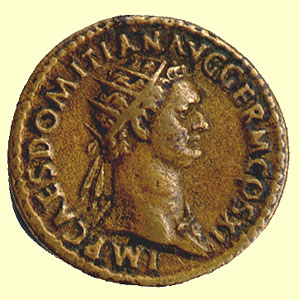 Contents -
Previous Article -
Next Article
Contents -
Previous Article -
Next Article
It is surprising to many modern students of history to find out that the Greeks and Romans could control very precisely the percentage of each different metal that went into their alloys. The fineness or proportion of precious metal in an alloy was most important in commerce and archaeological research has shown that the Romans could control the finess of gold in their coins and ingots to within one percent. This degree of control not only allowed the Romans to closely guard the purity of their gold and silver coins but allowed them to cheat accurately as well!
An alloy of copper and zinc called orichalcum was used a great deal by the Romans. This consisted of eighty percent copper and twenty percent zinc, with small amounts of lead, tin, and other metals and would be called yellow brass today.
Go to next article:
Go back to previous article: